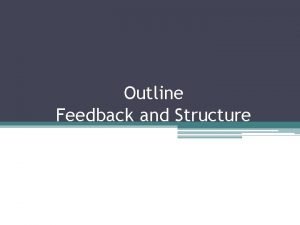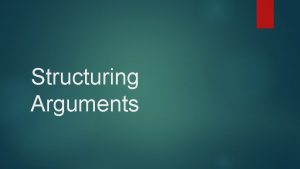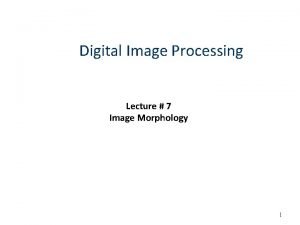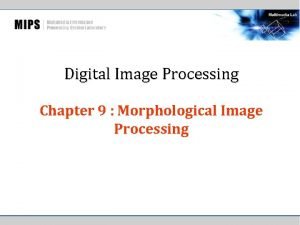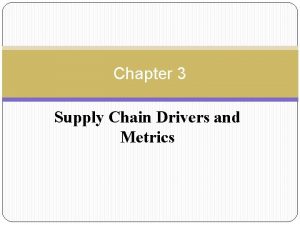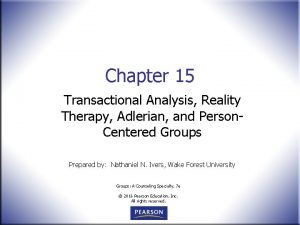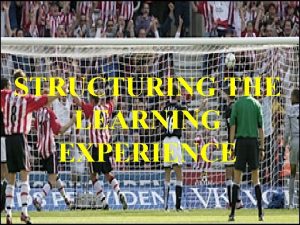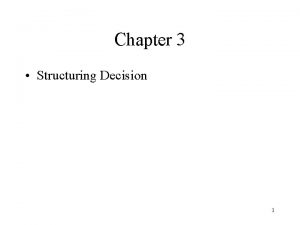A RATIONALE FOR SERMON STRUCTURE Structuring of sermon







- Slides: 7

A RATIONALE FOR SERMON STRUCTURE Structuring of sermon limits and controls the subjective nature of preaching. Pg 19 Structuring of a sermon helps the preacher to avoid talking in circles or rambling on without apparent purpose. Pg 21 Sermon structuring is not an end; it is a vehicle ( a means of getting to an end) that is meant allow substance – the content - of the sermon to be more effectively communicated. Pg 22 Good Sermon Structuring 1)Confirms and solidifies the preacher’s grasp of the material being presented in the sermon 2) Emphasizes one central idea 3) Encourages the preacher to know his target clearly and not to digress from it. 4) Results in harmonic flow ending with a demand for attention 5) Results in a “balanced attack” rather than a strategy that overplays or underplays any detail of the sermon. 6) Aids the preacher in delivery, creating a natural flow of ideas. 7) Enhances the preacher’s credibility to his/her audience; increasing the presentation’s total force of effectiveness.

Benefits for the audience 1) Enhances persuasion by letting the listener follow the argument being presented. 2) Gives listener a feel for a proper point of decision. 3) Helps the listener take in the thrust of the entire sermon not just isolated or unrelated parts. 4) Helps attention span, giving the audience mental breaks at the right times 5) rather encouraging the listeners to randomly take needed breaks at the 6) wrong times. Characteristics of Good sermon Structure 1) Unified 2) Discernible order 3) Balanced arrangement 4) Moves toward a specific target Basic Components of Sermon Structuring 1) Rooted in one scripture text 2) Reduced to one propositional phrase 3) Proposition must be supported by two subordinate truths 4) Main points are supported, clarified, illustrated, and proven by supporting material.

Basic Components of Sermon Structuring cont’d 5) Main points must yield transitional ability from one to other; relativity 6) Introduction and conclusion should be consequent from the body of the 7) text The Introduction – Basic Functions 1) Must arouse interest 2) Must inform audience of the subject 3) Show the hearers their need to listen to the development of the subject (personal relevance). 4) Promote to the respect of the audience toward speaker (ethos) 5) Indicate how the sermon will develop Basic Characteristics of the Introduction 1) 10% -15% pf total speaking time 2) the very first sentence should point to direction of the sermon subject (the approach sentence) 3) Theme development should be followed by a transitional paragraph (proposition, the question posed by the proposition, and the transitional sentence). Uniqueness to the sermon being presented.

The proposition is called the sermon in a sentence. It is a brief simple statement declaring what should be known about theme of the sermon. The theme is the specific aspect to be covered in the sermon. The transitional sentence forms a logical bridge between the proposition and the body (main points) of the sermon. The transitional paragraph serves as a homiletical road map – it tells where the sermon is going and how it is going to get there. The final transition helps maintain a sense of unity and alerts the listener that a major shift has taken place. The Conclusion – Its Purpose • Factual purpose; restating each point or restating or paraphrasing the position (the intent) • Conceptual purpose; help the audience to understand the major truth claims of the sermon have on the bearing on their moral judgments and volitions. • Applicatory purpose; strive to bring about a change either in behavior or attitude of each listener

METHODS OF SERMON STRUCTURING A sermon needs to have thematic unity and a particular purpose in mind. Topical Sermon Subject is based on a given Scripture text, usually one verse, while its main points and subpoints are not based on that text exclusively. Pg. 25 The sermon text from which the subject is taken should, at the very least, clearly speak to the subject being explored in the sermon. Pg 25 Advantage: A topical sermon lends itself to great oratorical preaching Disadvantage: A topical sometimes, though not necessarily, biblically shallow. Note: When using the topical sermon the preacher must make sure his ideas are based on scriptural truth. Textual Sermon The basis of a textual sermon is when a verse or two contains two or more distinct ideas related to a single theme and when the text reflects the thrust of the larger context. The main points of the sermon must come the text and should center around a single theme with subpoints from parallel passage or from outside the Scriptures. Expository Sermons Main points and subpoints are based on parts of the text, should be used (in true sermonic fashion) and that every part of the text--- every sentence, clause, and phrase---- be used in a systematic structure.

Five Main Parts Of A Sermon 1. Subject, titles, theme - The topic treated in writing, conversation; subject written or spoken about; the name of the sermon, etc. . 2. Text – basically the scripture…. A passage of the Bible that theme, subject, or title is drawn from 3. Introduction – the beginning section of a sermon. What is the need for an introduction? • To awaken an interest in theme or subject • To prepare the audience for what is to follow. • To tell the people what you are going to make known. It leads into the message. Sources for an Introduction ü The text serves as an introduction. Research it. Define the relationship between today’s circumstances as compared to Christ or the Christian way of life. ü An historical setting ü A geographical setting ü Perhaps the personal circumstances in the life of a notable person ü Some contemporary situations Actually, any method of focusing the minds and attention on your message is in order. The more dramatic sermons can use visual aids, or illustrations to help introduce your message.

4. BODY: The body of a sermon is like a building; present it as such. The body of a sermon is that portion in which the text and subject matter are developed. It answers three important questions: What? How? and Why? WHAT BENEFIT OR ADVANTAGE ONE MIGHT RECEIVE……HOW ONE MAY APPLY IT IN HIS/HER LIFE…. . WHY IS IT NECESSARY TO APPLY IT? 4. CONCLUSION: This is the closing portion of the sermon. Try to make a summary of your sermon in two minutes or less. Go over ALL your main thoughts. When you have touched upon them, restate your text; quote your “closing line” and SIT DOWN. That is the proper time to sit down. That is the most appropriate time to stop. NOTE: In your introduction, tell the WHAT YOU ARE GOING TO DISCLOSE. Then in your body speak on what you STATED in the introduction. In the conclusion restate WHAT YOU HAVE BEEN SPEAKING ABOUT.
